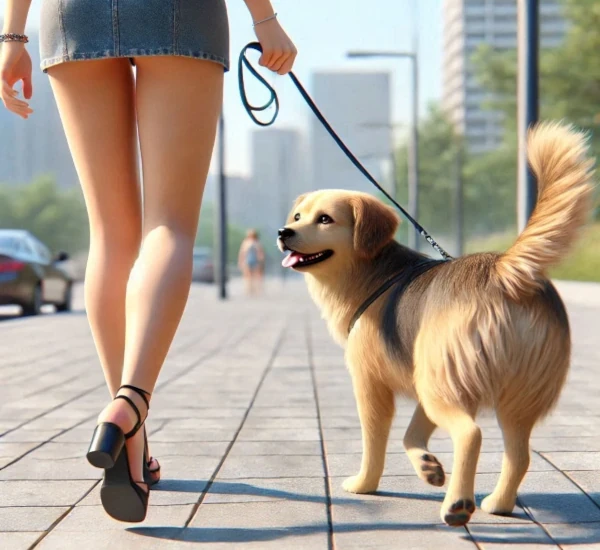The best techniques to prevent your dog from pulling on the leash
Teaching your dog to walk calmly on a leash will make your walks more enjoyable.
Why Do Dogs Pull on the Leash?
Dogs often pull on the leash due to excitement or curiosity. They want to explore their environment, reach interesting smells, or interact with other dogs. This can also be due to a lack of leash walking training or a negative association with this equipment. Identifying the specific reason for the behavior is essential to apply the right training method.
By following these tips and using appropriate equipment, you can transform your walks into pleasant and stress-free moments for you and your dog.
Using the Right Equipment
Appropriate equipment can facilitate learning.
- No-pull harness: Reduces the dog's pulling force. Ideal for strong dogs or young dogs in training.
- Flat collar: Suitable for calm dogs. Ensure it is well-adjusted to avoid discomfort.
- Medium-length leash: Opt for a leash about 1.5 to 2 meters long for a good balance between control and freedom.
- Adjustable leash: Allows varying the length as needed.
- Front-clip harness: Allows easier direction of the dog by redirecting them towards you if they pull.
- Reflective collars and harnesses: For evening walks, they ensure better visibility.
Avoid choke collars, prong collars, or electric collars, which can cause physical injuries and psychological stress.
Teaching Loose-Leash Walking
Loose-leash walking training involves teaching your dog to walk calmly beside you.
- Start in a calm, distraction-free environment, such as your garden or an indoor space.
- Use a high-value treat to get your dog's attention and keep it near your leg.
- Move slowly, saying a keyword like "heel" to associate the action with the command.
- Reward generously each time your dog walks by your side without pulling.
- If your dog moves away or pulls, stop immediately, gently bring them back to your side, and resume.
- Gradually increase distractions once the dog masters the basics.
Repeat these steps regularly to reinforce the desired behavior.
The "Stop and Go" Technique
This method teaches the dog that pulling on the leash gets them nowhere.
- As soon as your dog starts to pull, stop immediately.
- Do not pull on the leash to correct your dog. Simply wait for them to release the tension on their own.
- Once they come back to you, praise them and resume walking.
- Repeat this process every time they pull. Consistency is key for the dog to understand the link between their behavior and stopping the walk.
The Reward Method
Reinforcing positive behaviors with rewards is an effective technique.
- Keep treats handy during walks.
- Reward your dog as soon as they walk calmly by your side, using treats, toys, or verbal praise.
- Associate a command like "calm" or "heel" with the moment you reward.
- Gradually reduce treats as the behavior becomes a habit.
Positive association will reinforce your dog's desire to walk without pulling.
Avoiding Common Mistakes
- Never punish your dog by pulling violently on the leash. This could injure them or create anxiety.
- Do not let your dog pull to get what they want, as this reinforces their behavior.
- Do not move directly to long, distracting walks if your dog is not yet well-trained.
- Avoid using inappropriate or uncomfortable equipment for your dog.
Practice Regularly
Leash walking training requires patience and regularity. Plan short but frequent training sessions to maintain your dog's interest. Alternate environments to prepare them for different situations.
Consult a Professional if Necessary
If, despite your efforts, your dog continues to pull or shows signs of stress, consult a dog trainer or behaviorist. They can assess your dog's behavior and offer tailored solutions, including specific exercises or additional equipment.
Other Tips for Dog Owners
© 2023 touslestoutous.com − All doggies. All rights reserved.
"The data available on this site may be used provided that the source is duly acknowledged."
